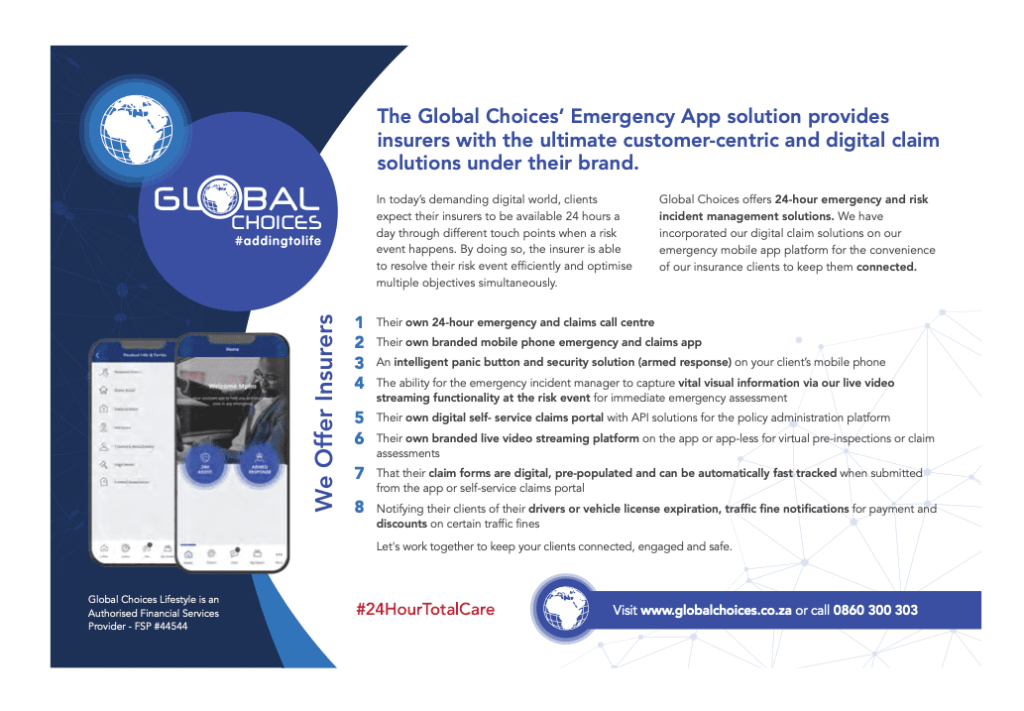
Curtis Davey Divisional Director Natsure HCV & Commercial
Heavy commercial vehicles (HCV) and goods in transit (GIT) have suffered some large losses in recent times due to the Pandemic coupled with the recent looting of the Kwa-Zulu Natal and Gauteng areas, which is quite unprecedented.
These were indeed unforeseen and as such were difficult to make provision for in a fleet owners risk management plan. The aforementioned, however, has forced fleet owners to re-evaluate a few areas within their operations and come up with the appropriate risk measures going forward.
One of the factors is the implementation of a fleet maintenance plan, the knowledge of routes travelled and the monitoring of driver’s behaviour. Although these are obvious things, they are in most instances overlooked or ignored in the quest to earn the proverbial extra buck. The theft or looting of cargo occurs mostly in one of two of the following instances, in the event of an accident or the vehicle breaks down in a remote area.
Both these instances occur due to a poorly maintained vehicle which is a direct result of the financial strain placed on business as a result of the COVID pandemic. In some instances, these unprecedented event have even caused thriving businesses to close down. The strain on finances invariably leads to fleet owners not maintaining the fleet as it should be leading to ill-maintained vehicles on our roads. Another factor is the use of routes that are unknown to the driver. This generally happens where a driver deviates from a designated route either due to being late for the delivery or simply because he wants to get the delivery done quicker. This is generally a recipe for disaster as the driver could either lose control of the vehicle or get lost in a remote area.
The use of telematics is much talked about within the transport industry and most insurers require telematics on higher-value vehicles. Whilst these do assist it is very much dependent on the involvement of the fleet owner and the control measures put in place. In a lot of instances, the units are installed purely due to the requirement and not for the purposes it was intended, namely monitoring of the vehicles and drivers.
“The theft or looting of cargo occurs mostly in one of two of the following instances, in the event of an accident or the vehicle breaks down in a remote area. “
A bureau service can also assist a fleet owner to monitor his fleet. This can be done by a third-party service provider who will monitor the fleet owners’ vehicles 24 hours a day. An additional benefit offered is that the bureau will also contact the drivers should they deviate from their route or where the vehicle starts making sudden movements indicating that the driver might be starting to suffer from fatigue.
Fatigue, and cell phone usage, is the highest contributing factor to accidents and, in some instances, forcing the driver to stop in unsafe places. Once again the use of camera`s and the use of a co-driver system is effective in eliminating this. The use of cameras is also of great value in monitoring and providing critical information when determining the route that needs to be used when delivering goods. This also assists in monitoring driver behaviour and should be used as a tool to encourage the right behaviour and not as a method of reprimanding a driver. Making use of safe and secure truck stops is important in ensuring the safety of the cargo.
“Driver incentives also play a vital role in getting the right driving behaviour from a fleet owners driver.”
Fleet owners should be aware of where the vehicle stops and keep themselves up to date with developments along the various routes. Some of the telematics systems are able to force the vehicles to come to a stop if the unit is activated but this is mostly to reduce hijacking. Driver incentives also play a vital role in getting the right driving behaviour from a fleet owners driver.
Reaction time is vitally important in the event of an accident or looting. Making use of an assist programme can mean the difference between losing a full load or losing only a partial load as they can recover the vehicle quicker and in doing so reduce the chances of losing the full load. The above precautions will assist the fleet owner to manage his risks which will inevitably have an impact on how the risk is determined by an insurer when rating the risk and ultimately apply a rate that will ensure that the policy runs profitability and is sustainable in the long run.
Whilst it is indeed true that the many pay the few, a fleet owner must be proactive in managing his risk. A fleet owner cannot simply rely on insurance as the only form of risk mitigation.


